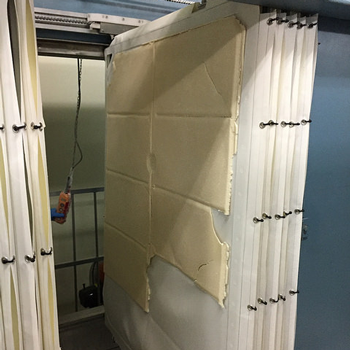
Kasu immediately after pressing as seen in the assaku-ki (sake press)
Kasu is the unfermented rice solids or “lees” left over when sake is separated from the main fermentation mash after brewing. The leftover sake kasu can have up to 8% alcohol content. Kasu is often sold in Japanese supermarkets and comes in “cakes”, or thin sheets. Sake Kasu can be eaten as is and has a texture of a firm cheese with a lightly alcoholic aroma. Depending on the intensity of the pressing of the sake mash, the
kasubuai (sake pressing ratio) can result in kasu that is higher or lower in moisture. More intense pressure removes more moisture for a drier style of kasu, while a gentle pressing creates a kasu with more residual moisture.
Kasu is used in Japanese cooking as well for such dishes such as kasu-jiru (sake kasu soup). In addition, the alcohol remaining in kasu can be distilled out for making subtle and light tasting shochu known as “Kastori shochu”. Sake lees are also the main ingredient in kasuzuke (粕漬け) or sake kasu pickled vegetables. One other well known use of sake kasu is in the making some styles of amazake. Given all the ways to use sake kasu, demand for this sake by-product is high.
Also See Related Terms:
• Amazake
• Yabuta
• Assaku-ki
• Kasubuai
« Back to Glossary Index


